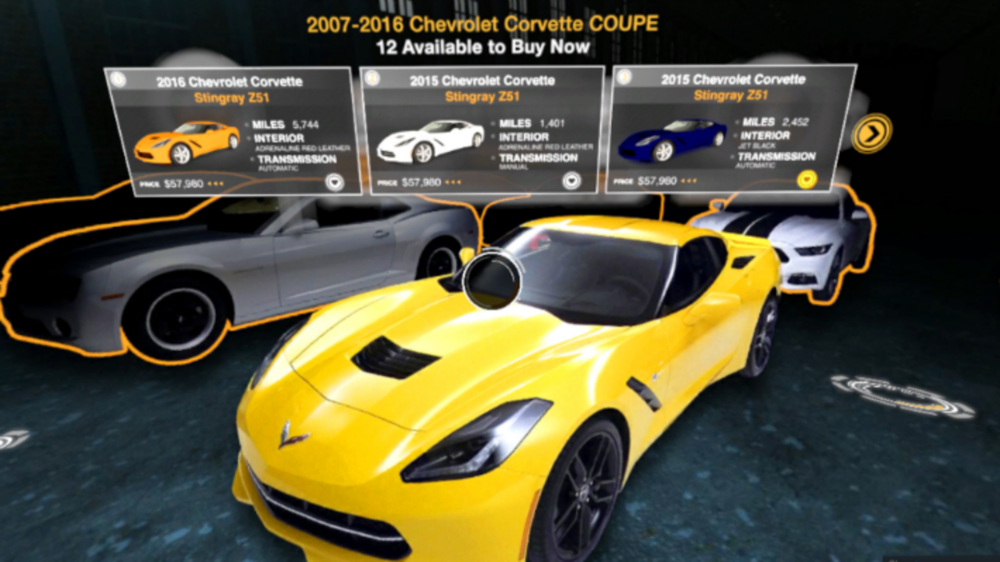In 2015, more than 10% of all purchases in the United States were made over the internet—another double-digit increase over previous years and a sure sign of what’s to come.
We can easily fast forward to a world where the trend continues apace, and someday, not so far off, 99% of all sales are transacted online. What will shopping look like in that world? What will it feel like?
We know that cars are not exempt from e-commerce. That’s where Vroom comes in. Vroom was founded three years ago on the belief that ordinary Americans are willing to make what’s likely the second-biggest purchase of their life—an automobile—online. We do everything we can to give our customers confidence to buy: We recondition our cars, deliver them anywhere in the continental U.S. for free, and provide a seven-day free-return window to make sure your ride is right.
This belief in online automotive buying has born fruit. We’ve sold a bunch of cars. But despite all the benefits, there are skeptics out there who still wonder, who in their right mind would purchase a $40,000 Mercedes without seeing it first? It may be O.K. for some, but not for everyone.
That’s the gulf we think virtual reality can bridge—the last divide between brick-and-mortar and e-commerce. So in August, we launched the first-ever virtual reality automotive showroom.
How it works:
Our showroom is just what it sounds like: an immersive 3D space stocked with premium cars that Vroom actually sells on our website every day. Users, wearing HTC Vive headsets, can explore, compare makes and models, listen to the authentic sounds of engines roaring to life, and even take the cars out for a virtual test drive.
When you look at a car in the showroom—say, a Chevy Corvette—a sleek blue screen of information materializes above it, highlighting engine specs, mileage, price, and other details. When you take a test drive, suddenly you’re transported to a real street on a sunny day with the open road before you.
Our VR experience doesn’t feel like traditional shopping. And it certainly doesn’t feel like traditional car shopping. There are no chatty salesmen talking your ear off on a sweltering dealership lot. We engineered our showroom to look and feel like a videogame, without building in full-on gamification. The videogame-inspired interface feels futuristic, while grounding users in the familiar.
VR for all
The applications of virtual reality could be widespread: You might pick out new kitchen cabinets from your couch, or take a three-hour virtual vacation to Paris. The general population is a few years out from overall adoption, but it is coming. According to the “2016 Virtual Reality Industry Report,” two million (non-Google Cardboard) virtual reality headsets will be sold by the end of 2016, and 36.9 million people will be exploring virtual frontiers by 2020. After that, comes growth: 135.6 million VR headset in use by 2025. Those dates may well accelerate. According to the experts, we’re just one must-have game, social network, or sales app away from collectively buying in.
If you’ve ever strapped on a virtual reality headset, it’s not hard to see why. The experience is cool. It feels like the future. In our VR showroom, without the constraints of space and time, users can examine life-size models side-by-side that once required a dozen different trips to dealerships. We can save people time, make them more knowledgeable shoppers, and hook them on our brand all at the same time. Integrating our sales checkout process into the VR is a huge part of our ultimate goal: the creation of a seamless transition between discovery and purchase.
The power of VR
In August, we launched our VR campaign in select markets, targeting shoppers in high-end shopping malls. Our goals are to increase brand awareness, drive traffic to our website, and get user feedback to incorporate in future versions of the showroom. Though the campaign is still new, we’ve received encouraging responses from early users. We’ve had hundreds of people try it out and the vast majority (more than four in five) said they were satisfied with the experience. Of those currently in the market to buy a car, nearly half said they plan to purchase their next vehicle from Vroom.
The feedback has given us confidence that we’re moving in the right direction at the right time. Like most emerging technologies, no one company will master virtual reality e-commerce on their own. It will take a village—all of us improving together in pursuit of the perfect customer journey. But if we all start now, when the day comes that 99% of all transactions take place online, our virtual store will be primed.
About the author:








